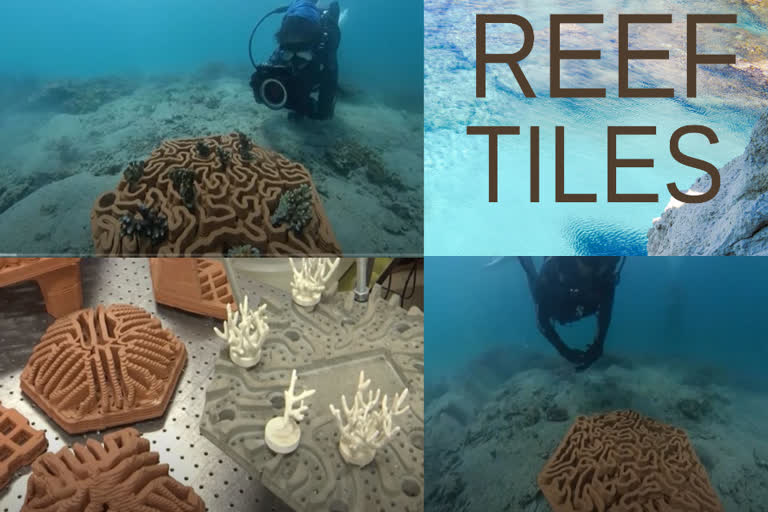Hong Kong: Reef Tiles, these innovative inventions are installed below the waves as a habitat for corals.
Essential coral has been lost in huge amounts on Hong Kong coasts - 90 percent has gone in one marine park area due to unknown causes, according to a 2015 study. So scientists and architects are collaborating to help the organism repopulate.
It's a joint effort by the Robotic Fabrication Lab of Faculty of Architecture, and the Swire Institute of Marine Science, both at the University of Hong Kong.
"In one of our sites, we found that in just a brief period of time, there wasn't any hard bottom on the seafloor left to attach corals. Corals don't like being surrounded by sand, it's abrasive, it scours their tissue. And so we need to have a hard bottom that we can attach the corals to, we literally glued them to the seabed," says David Baker, an Associate Professor at Swire Institute of Marine Science.
"So we had to come up with an innovative idea, and I kept thinking about what if we could just tile the seafloor, like you might your kitchen or your bathroom floor? What if we put down a hard bottom and create a habitat where there isn't one right now. "
He adds that the technology could be used in other areas - such as aquariums.
The project brings together the marine scientists who know about coral and the underwater ecosystem, as well as the architects who know how to make this infrastructure sustainable.
3D printing technology is used to create intricate clay tiles for coral to grow on. The material used to make them is crucial to the design.
"In the beginning, we were thinking of doing it in concrete, but concrete can be as well detrimental to the environment when you put it into water, because of the PH level, and so that's why we said why not use a more sustainable material which basically clay is just soil in the end," explains Christian Lange, Assistant Professor, Faculty of Architecture, University of Hong Kong.
The project launched in 2016.
- The 60cm-diameter hexagon reef tiles were finalized and were designed by Lidia Ratoi, a researcher in robotic fabrication at the Faculty of Architecture.
- The 3D-printed clay reef's structure imitates the appearance of Platygyra or brain corals.
- They are designed to prevent sedimentation build-up, which is one of the major threats for corals.
- They become a "house" for corals which provides a healthy habitat for both coral seedlings and sea creatures.
"Usually you design for humans and their needs, and you have to take into consideration what they need in order to be able to survive. And we kind of did the same thing with corals, we had to learn what they need and design a house where they can also survive," says Rotai.
